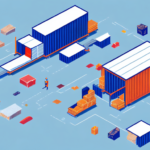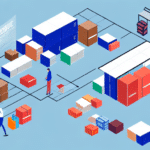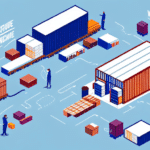The Importance of Logistics in Modern Business
Logistics is a cornerstone of contemporary business operations, encompassing the planning, organization, and management of the movement of goods and services from their origin to the final destination. Effective logistics is essential for companies aiming to maintain competitiveness in the global marketplace. According to a Statista report, the global logistics market is projected to reach over $12 trillion by 2027, underscoring its critical role in business growth and sustainability.
Logistics Beyond Transportation
Logistics extends beyond mere transportation and delivery. It includes inventory management, warehousing, packaging, and reverse logistics. Efficient inventory management ensures that companies can meet customer demands without overstocking, reducing holding costs and minimizing waste.
Impact on Competitiveness and Customer Satisfaction
Optimized logistics systems enhance customer satisfaction by ensuring timely and accurate deliveries. A study by Forbes highlights that 69% of consumers consider timely delivery as a key factor in their purchasing decisions, making efficient logistics a vital component of customer retention strategies.
Logistics vs. Supply Chain Management
While often used interchangeably, logistics and supply chain management are distinct yet interconnected fields.
Defining Logistics
Logistics focuses on the efficient movement and storage of goods. It deals with transportation, warehousing, inventory control, and order fulfillment.
Defining Supply Chain Management
Supply chain management (SCM) encompasses a broader scope, including procurement, production, distribution, and the coordination of all activities across the supply chain. SCM aims to optimize the entire process from raw material acquisition to the delivery of finished products.
Key Differences and Integration
While logistics is a subset of SCM, effective supply chain management integrates logistics with other functions to enhance overall efficiency and responsiveness. This holistic approach ensures that all parts of the supply chain work seamlessly together to meet business objectives.
The Evolution and Future of Logistics
Historical Overview
The concept of logistics has evolved significantly from its origins in military operations, where it was used to supply troops with necessary resources. In the early 20th century, logistics began to formalize within the commercial sector, leading to more structured approaches in managing the flow of goods.
Modern Advancements
Today's logistics is a complex field that integrates advanced technologies such as automation, robotics, and information systems. For instance, IBM reports that the adoption of IoT in logistics has increased visibility across the supply chain, enabling real-time tracking and better decision-making.
Future Trends
Looking ahead, the logistics industry is poised for further transformation with innovations like blockchain for enhanced transparency, increased use of artificial intelligence for predictive analytics, and the expansion of autonomous delivery systems. These advancements are expected to drive greater efficiency and reduce operational costs.
The Role of Technology in Logistics
Automation and Robotics
Automation and robotics are revolutionizing warehouse operations by performing tasks such as picking, packing, and sorting with high precision and speed. This reduces labor costs and minimizes human error, leading to more reliable logistics processes.
Data Analytics and Artificial Intelligence
Big data analytics and AI are being leveraged to optimize supply chain operations. According to a McKinsey report, companies using AI-driven logistics solutions can improve delivery accuracy by up to 30% and reduce operational costs by 20%.
Emerging Technologies: Drones and Autonomous Vehicles
Drones and autonomous vehicles are gaining traction as innovative solutions for last-mile delivery and long-haul transportation. These technologies promise faster delivery times and lower transportation costs, although they still face regulatory and technical challenges before widespread adoption.
Sustainable Logistics Practices
Importance of Sustainability
With increasing environmental concerns, sustainable logistics practices are becoming imperative. Sustainable logistics aims to reduce the carbon footprint of logistics operations through eco-friendly practices.
Green Transportation Methods
Adopting green transportation methods, such as electric vehicles and fuel-efficient shipping, can significantly lower emissions. A study by the EPA indicates that transitioning to electric delivery trucks can reduce greenhouse gas emissions by up to 50%.
Benefits of Sustainable Practices
Implementing sustainable logistics not only benefits the environment but also enhances a company's reputation and can lead to cost savings. For example, optimizing delivery routes to minimize fuel consumption reduces operational costs while supporting environmental goals.
Overcoming Challenges in the Logistics Industry
Rising Costs and Fluctuating Demand
The logistics industry faces challenges such as rising transportation costs and unpredictable demand patterns. To mitigate these issues, companies are adopting flexible logistics strategies that can quickly adapt to market changes.
Global Supply Chain Disruptions
Global events, such as pandemics and geopolitical tensions, can disrupt supply chains. Building resilient supply chains through diversification of suppliers and increasing inventory buffers are common strategies to enhance resilience.
Strategies to Improve Resilience
Investing in technology, fostering strong supplier relationships, and continuous risk assessment are effective strategies for improving supply chain resilience. These measures help companies respond swiftly to disruptions and maintain operational continuity.
Best Practices for Streamlining Logistics Processes
Implementing Lean Methodologies
Lean methodologies focus on eliminating waste and optimizing processes. By identifying inefficiencies such as excess inventory or unnecessary transportation, companies can enhance operational efficiency and reduce costs.
Enhancing Communication
Effective communication across the supply chain is crucial for preventing errors and ensuring smooth operations. Utilizing integrated communication platforms can facilitate real-time information sharing and collaboration among stakeholders.
Collaboration and Continuous Improvement
Collaboration with suppliers and customers fosters a more integrated supply chain, leading to improved lead times and customer satisfaction. Additionally, adopting a continuous improvement mindset through regular process reviews and optimizations helps maintain high efficiency levels.
Conclusion
The work involved in logistics is vast and continually evolving. By understanding the importance of logistics, embracing technological advancements, adopting sustainable practices, and implementing best strategies, companies can optimize their supply chains and maintain a competitive edge in the marketplace. Staying informed about industry trends and continuously seeking improvements will ensure long-term success in the dynamic field of logistics.




















